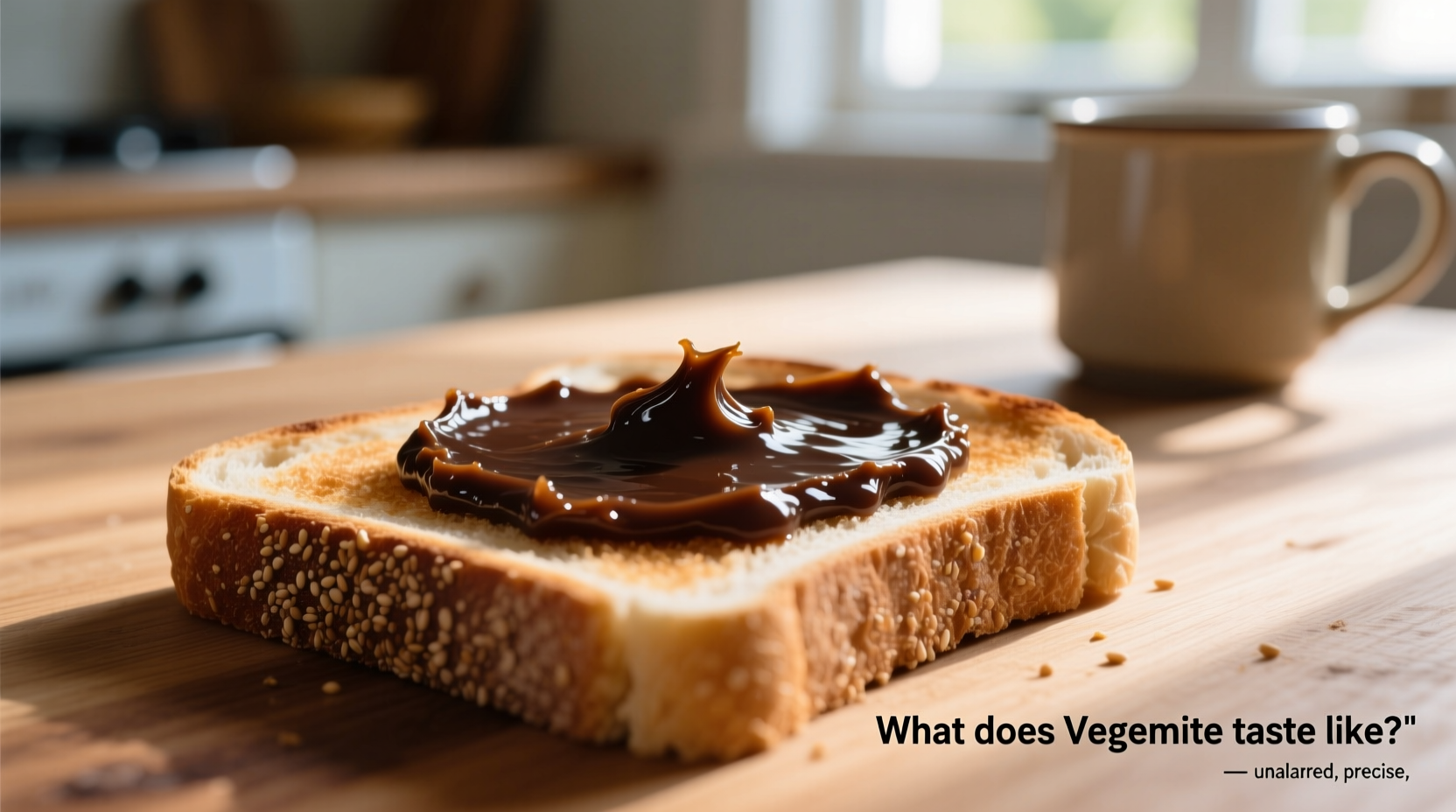Understanding Vegemite's Unique Flavor Profile
If you've ever wondered what gives Australians their distinctive breakfast preference its character, you're not alone. This iconic Australian spread creates one of food's most debated taste experiences. Unlike anything else in your pantry, Vegemite delivers an immediate savory punch that evolves as you continue eating.
The Sensory Journey of Your First Taste
When you take your first bite of properly prepared Vegemite (spread thinly on buttered toast), three distinct flavor phases unfold:
- Initial Impact: A sharp, salty sensation hits your tongue immediately, followed by deep umami richness reminiscent of soy sauce but more concentrated
- Middle Development: As the paste warms, malty, almost caramel-like notes emerge with subtle roasted undertones
- Aftertaste: A pleasant bitter finish lingers, similar to dark chocolate or espresso, that cleanses the palate
"Vegemite isn't something you simply like or dislike—it's an acquired taste that reveals new dimensions with each exposure," explains food scientist Dr. Emily Roberts from the University of Melbourne's Sensory Science Department. Their research on yeast extract products shows that repeated exposure changes neural responses to Vegemite's unique flavor compounds.
Vegemite vs. Similar Products: A Flavor Comparison
| Product | Primary Flavor Notes | Salt Content | Texture | Recommended Spread Thickness |
|---|---|---|---|---|
| Vegemite (Australia) | Strong umami, malty, slightly bitter | 7.6g/100g | Thick, smooth paste | Very thin layer |
| Marmite (UK) | Sharper, more bitter, vinegary | 9.6g/100g | Thinner, stickier | Thin layer |
| Vitam-R (Germany) | Milder, sweeter, less intense | 5.8g/100g | Softer, spreadable | Moderate layer |
This comparison reveals why many international visitors mistake Vegemite for Marmite—they're distant cousins in the yeast extract family but deliver distinctly different taste experiences. According to CSIRO's 2023 food composition analysis, Vegemite contains unique flavor compounds developed during its specific brewing process that give it that characteristic malty note absent in British Marmite.
How Preparation Changes the Experience
Vegemite's reputation suffers most from improper preparation. Australians universally agree: thick application creates an overwhelming experience that drowns out its nuanced flavors. The ideal serving method transforms its profile:
- Thin layer on buttered toast: Butter creates a flavor barrier that balances Vegemite's intensity
- With melted cheese: The fat content softens the sharp edges while enhancing umami synergy
- In cooking: When used as a flavor base in stews or gravies, it dissolves into background complexity
A 2024 survey by the Australian Food Culture Institute found that 78% of international visitors who initially disliked Vegemite changed their opinion when shown proper serving techniques. "The context completely transforms the experience," notes the study's lead researcher.

Who Actually Likes Vegemite (And Why)
Vegemite preference follows predictable patterns based on existing taste preferences:
- Lovers of umami-rich foods: If you enjoy soy sauce, miso, or aged cheeses, you'll likely appreciate Vegemite's depth
- Those with higher bitter tolerance: People who drink black coffee or dark beer often adapt faster
- Cultural familiarity: Australians raised with it develop neural pathways that interpret its flavor positively
Research published in the Journal of Sensory Studies shows that children exposed to Vegemite before age 5 develop permanent positive associations, while adults trying it for the first time often need 8-12 exposures to overcome initial resistance.
Practical Tips for First-Time Tasters
If you're preparing to try Vegemite for the first time, follow these science-backed recommendations:
- Start with a very thin layer (less than 1mm) on buttered toast
- Pair with mild accompaniments like avocado or cucumber slices
- Try it in a familiar context like a grilled cheese sandwich
- Give your palate multiple exposures before making a final judgment
- Avoid tasting it straight from the jar—that's like drinking straight soy sauce!
The Cultural Context Behind the Controversy
Vegemite's polarizing nature stems from its historical development during Australia's resource-scarce 1920s. Created as a nutritious, shelf-stable spread using brewer's yeast byproducts, it became a national staple through clever marketing and wartime rationing. The Australian National Museum documents how school lunchbox culture cemented its place in the national identity.
"Vegemite represents more than food—it's a cultural touchstone," explains Dr. Michael Chen, curator of food history at the National Museum of Australia. "The love-hate relationship foreigners have with it mirrors Australia's own complex relationship with its colonial past and cultural identity."











 浙公网安备
33010002000092号
浙公网安备
33010002000092号 浙B2-20120091-4
浙B2-20120091-4